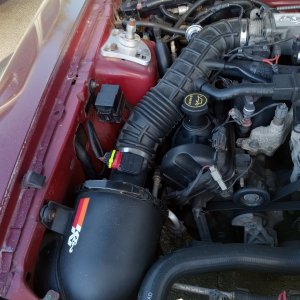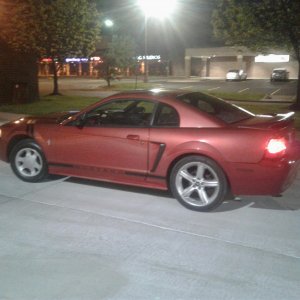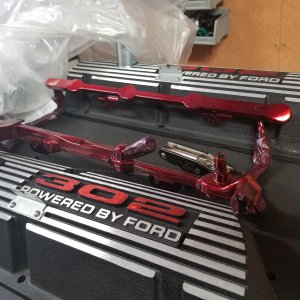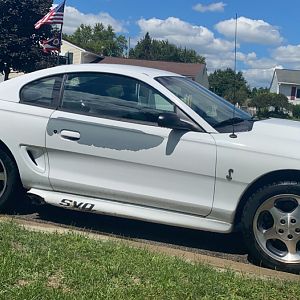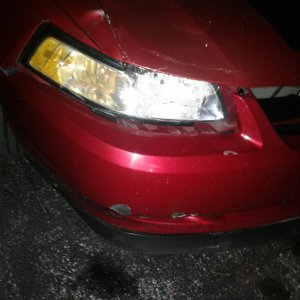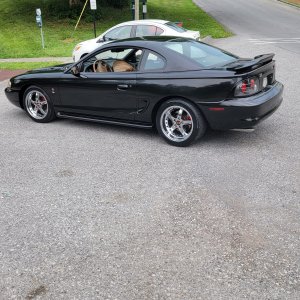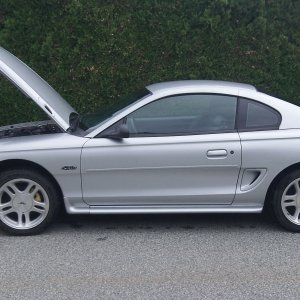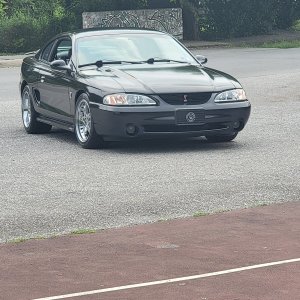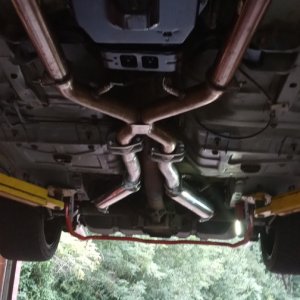Lets take a look at modular cams and discuss why "old school" cams specs are almost useless. My intention here is to offer insite for those confused about cam specs.
A modulars cam lobe is big....period. Much bigger than the old in block camshafts of yesterday. These newer over head cam engines are not as restricted with cam lobe size like a cam that needs to slip through 4 bearing races located in the center of the engine block like the small blocks do. Instead, the modulars drop directly into the head and caps hold the cams in place. This allows for a cam lobe to be bigger. And since the cam lobe directly controls the follower to the valve tip...no levers, push rods, or adjusters...* their is very minimal deflection of the components.
Deflection is where the components will be in motion under stress and have a little bit of distortion that causes the component to move away from its nominal specs. For instance the inside block camshaft creating pressure on the roller(.0005), the roller presure to the adjuster(.0005), the adjuster to the pushrod(.020), the pushrod distorts and causes its length to be reduced(.001+), aluminum rocker lever distortion(.001+), rocker stud distortion(.003+) and the gray area of all the contact points being completely intact with no amount of play(.003). Im leaving out valve stem motion from spring inertia and rocker tips not controlling it... (.005?)
Youll notice the amount of play with in the old school block setup.
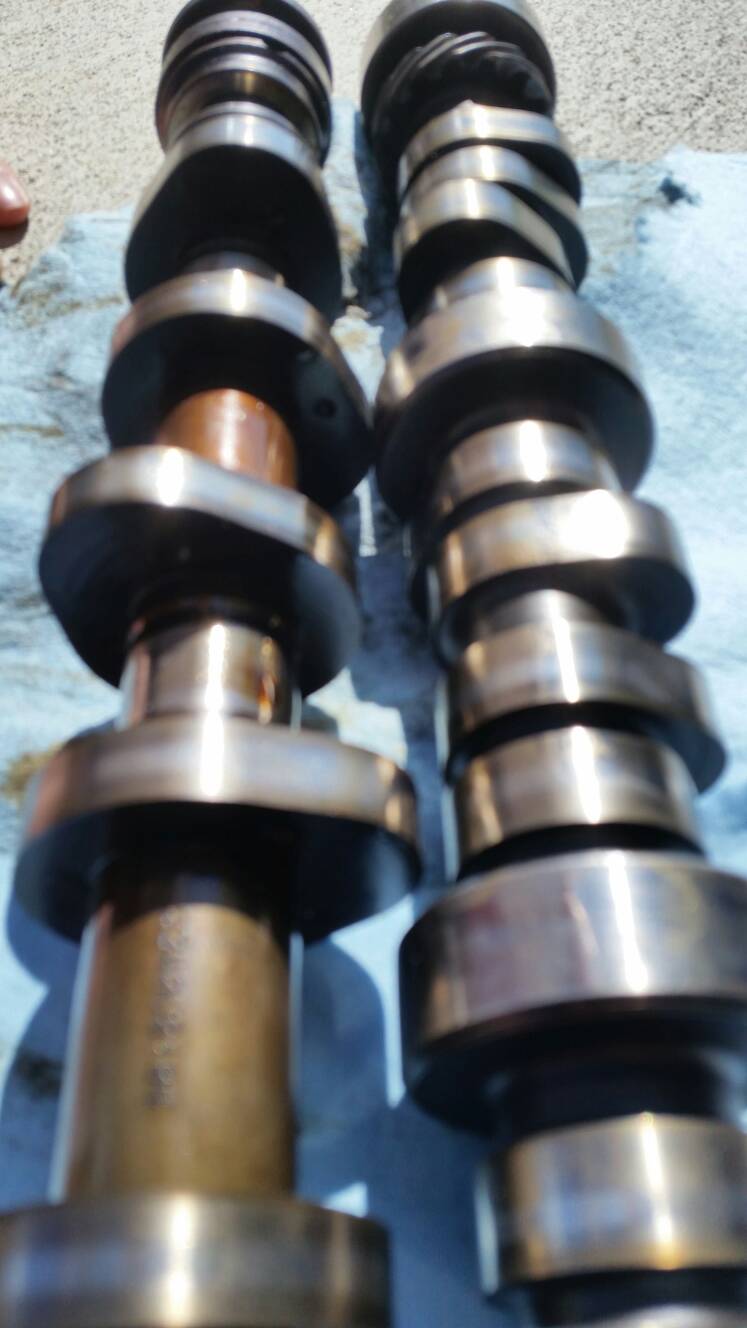
Modular left / old windsor right
This is why "old school" cam specs are useless in modulars. Im refering to a cams duration @.050". Back in the olden days, this was a fair measure used for what I just explained.
Remember the modulars have big cam lobes? Compared to the old camshafts in the block...they are bigger! Much bigger, also adding the direct connection to the valve tip, eliminating chance of play. That big lobe gives more length available to valve articulation. This means subtle soft openings as well as closings. It also means holding valves open during overlap were the piston is the closest at the top(a pi head has .060" valve lift to head deck surface) You can see how the modular camshaft can hang a valve open for a good amount of duration under .050". Any builder will look at the .050" duration and crunch it with the actual seat open/close duration (normally given at .005" lift per adjuster type) to get an idea of lobe lift ramp rate.....only if the manufacturer issues the seat open/close specs.
Seat open/close specs known as advertised duration is just that.....actual(or close to) cam duration from the cams base circle. Base circle is the low point of the lobe(imaginary circle) when the valve is shut, but when the lobe moves from that circle(valve lift)duration starts.
Compression starts directly when the intake valve seats!(close)..period. Not .050". 70% of your exhaust exits directly when the exhaust valve cracks open. This actually is the BANG you hear(thousands of hot psi ready to leave). Overlap begins when the intake valve raises dirctly off the seat..... while the piston nears the top...... when exhaust valve starting to shut.... and this leads to overlap ending when exhaust valve seats ....shortly after the piston starts to desend......90% of this happens under .050" with a modular camshaft. Old school engines could NOT achieve this respectfully. SOOOOO..... why only issue .050" durations for a modular cam... when the seat to seat specs are the most critical. These mod camshafts are not like the old ones where valve articulation was minimum. If the manufacturer will not issue seat to seat specs (Advertised duration) ...choose a manufacturer that will!
A modulars cam lobe is big....period. Much bigger than the old in block camshafts of yesterday. These newer over head cam engines are not as restricted with cam lobe size like a cam that needs to slip through 4 bearing races located in the center of the engine block like the small blocks do. Instead, the modulars drop directly into the head and caps hold the cams in place. This allows for a cam lobe to be bigger. And since the cam lobe directly controls the follower to the valve tip...no levers, push rods, or adjusters...* their is very minimal deflection of the components.
Deflection is where the components will be in motion under stress and have a little bit of distortion that causes the component to move away from its nominal specs. For instance the inside block camshaft creating pressure on the roller(.0005), the roller presure to the adjuster(.0005), the adjuster to the pushrod(.020), the pushrod distorts and causes its length to be reduced(.001+), aluminum rocker lever distortion(.001+), rocker stud distortion(.003+) and the gray area of all the contact points being completely intact with no amount of play(.003). Im leaving out valve stem motion from spring inertia and rocker tips not controlling it... (.005?)
Youll notice the amount of play with in the old school block setup.

Modular left / old windsor right
This is why "old school" cam specs are useless in modulars. Im refering to a cams duration @.050". Back in the olden days, this was a fair measure used for what I just explained.
Remember the modulars have big cam lobes? Compared to the old camshafts in the block...they are bigger! Much bigger, also adding the direct connection to the valve tip, eliminating chance of play. That big lobe gives more length available to valve articulation. This means subtle soft openings as well as closings. It also means holding valves open during overlap were the piston is the closest at the top(a pi head has .060" valve lift to head deck surface) You can see how the modular camshaft can hang a valve open for a good amount of duration under .050". Any builder will look at the .050" duration and crunch it with the actual seat open/close duration (normally given at .005" lift per adjuster type) to get an idea of lobe lift ramp rate.....only if the manufacturer issues the seat open/close specs.
Seat open/close specs known as advertised duration is just that.....actual(or close to) cam duration from the cams base circle. Base circle is the low point of the lobe(imaginary circle) when the valve is shut, but when the lobe moves from that circle(valve lift)duration starts.
Compression starts directly when the intake valve seats!(close)..period. Not .050". 70% of your exhaust exits directly when the exhaust valve cracks open. This actually is the BANG you hear(thousands of hot psi ready to leave). Overlap begins when the intake valve raises dirctly off the seat..... while the piston nears the top...... when exhaust valve starting to shut.... and this leads to overlap ending when exhaust valve seats ....shortly after the piston starts to desend......90% of this happens under .050" with a modular camshaft. Old school engines could NOT achieve this respectfully. SOOOOO..... why only issue .050" durations for a modular cam... when the seat to seat specs are the most critical. These mod camshafts are not like the old ones where valve articulation was minimum. If the manufacturer will not issue seat to seat specs (Advertised duration) ...choose a manufacturer that will!

